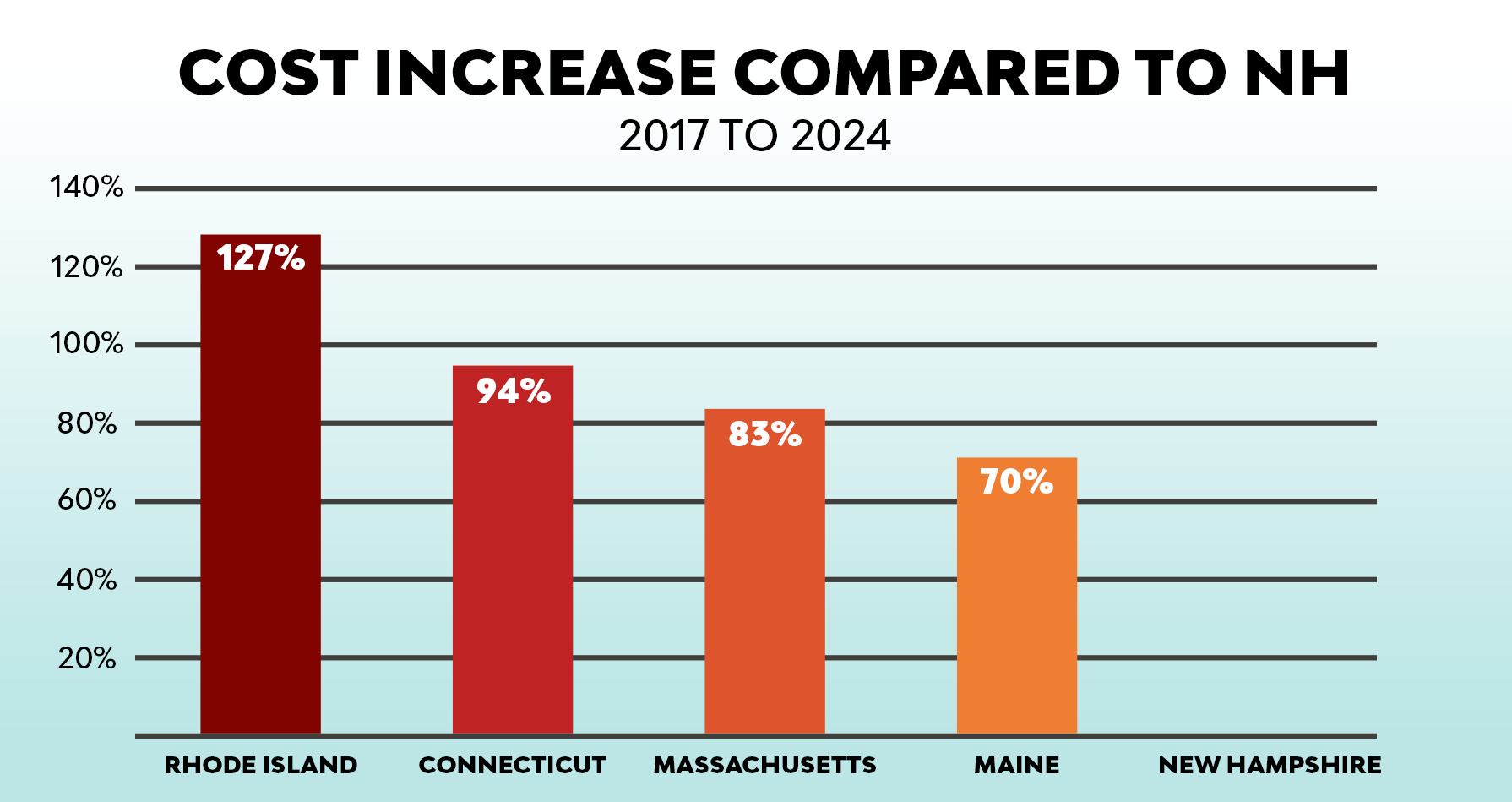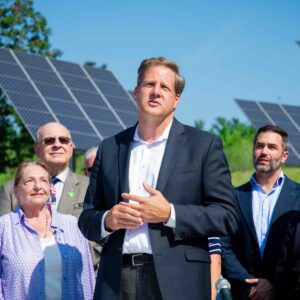When Gov. Chris Sununu was first sworn in as governor in January 2017, New Hampshire residents were paying 18.42 cents per kilowatt hour for electricity. After seven years in office — February 2024 — the rate was 23.76 cents per kwh. That 29 percent increase in ratepayer costs was lower than every New England state except Vermont.
The math is simple. During Sununu’s administration, rates increased more in Maine (70 percent), Massachusetts (83 percent), Connecticut (94 percent), and Rhode Island (127 percent) than in the Granite State, according to data from the Information Administration (EIA) “Electric Power Monthly” report.
A press release from Sununu touting the latest economic good news from the Granite State apparently triggered the liberal Boston newspaper. It has written not one but two articles attempting to rebut what they call Sununu’s “funny math” regarding residential electricity rates.
“The New Hampshire Department of Energy cherry-picked data, then muddled it, to argue the state is better off than others in New England,” The Globe wrote.
Oddly, the article included a graph generated by its own staff confirming Sununu’s math: Rates during Sununu’s administration rose more slowly than the rest of the region (excluding Vermont).

From Gov. Chris Sununu’s office
Even more odd is The Globe’s claim that the good news is “an artifact of a cherry-picked timeframe.” The timeframe is the period of time Sununu has been in office.
The Globe focused heavily on the fact that Vermont is not included in Sununu’s data, noting that “Vermont’s electricity rates have risen more slowly and remain lower than New Hampshire’s rates.”
New Hampshire Department of Energy Deputy Commissioner Christopher J. Ellms Jr. acknowledged the omission. But as The Globe itself noted, Vermont has a “vertically-integrated” system is unique in the region.
“It’s an apples-to-oranges comparison,” Ellms said, a view confirmed by Consumer Advocate Donald M. Kreis in The Globe’s own reporting.
“Vermont’s electric utilities are still vertically integrated monopolies, whereas in New Hampshire customers can buy electricity from competitive suppliers or community power aggregation programs,” Kreis told the paper.
So, why is The Globe working so hard to undermine the math?
“The reason you see folks pushing back on the presentation of that information is because there is a narrative that they want to make sure is cemented in peoples’ minds that, in every case, clean energy is more reliable and cheaper than other resources,” he said. “Frankly, you look at the data, it’s just not true.
“New Hampshire has made the decision that consumers should be emphasized over decarbonization. Our point is simply that public policy decisions have a cost associated with them,” Ellms added.
And the forecast for ratepayers in The Globe’s backyard is even worse. Massachusetts Gov. Maura Healey (D) has made a commitment to purchasing more offshore wind power, just as rates in the industry are soaring. According to a report by Commonwealth Beacon, New York just signed an offshore wind contract at $150.15 per megawatt hour, twice the price of the contract Massachusetts signed with the same provider ($76.73) a year ago.
The Vineyard One project, which Massachusetts is counting on to reach its zero-emissions goals, has a guaranteed price of $89 per megawatt hour, and industry experts expect that rate to rise as inflation and financing costs increase. “Three other wind farm deals were negotiated and approved in Massachusetts at less than $80 a megawatt hour, but all three were terminated when interest rates and inflation took off,” Commonwealth Beacon reports.
“While other states have let politics drive policy, New Hampshire has always put the ratepayers’ bottom line first,” Sununu said in a statement. “We’ve let markets, not government, drive innovation,” Sununu added.
Meanwhile, The Globe has yet to report on New Hampshire Democratic gubernatorial candidate Cinde Warmington’s “CLEAN Energy Economy Plan” released last month. Executive Councilor Warmington, who is facing off against former Manchester Mayor Joyce Craig for her party’s gubernatorial nomination, is proposing to get the Granite State to net-zero emissions by 2040. That’s a decade ahead of Massachusett’s 2050 zero-emissions target date.
For a state where more than 60 percent of households rely on oil tanks and propane for heat, Warmington’s plan is extremely aggressive, to say the least. And it’s a very different approach than New Hampshire’s current energy policy.
Ellms credited Sununu’s focus on residential ratepayers with the reason behind “positive outcomes in relation to other states.”
“The data clearly support that,” he said.
As for the fault-finding mission targeting Sununu, Elms said The Globe’s “focus on how information is presented seems to be designed to distract from the success that the information highlights.”
“Frankly, data presented in the article reinforced the point that New Hampshire is trending toward lower rate increases than our peers.”





